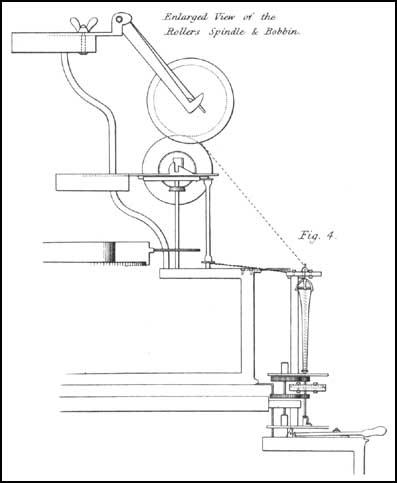Roller Spinning
Lewis Paul and John Wyatt patented their Roller Spinning machine in 1738. This machine had two sets of rollers which travelled at different speeds. This drew out a sliver of wool to the right thickness before spinning it.
By 1741 this machine, powered by donkeys, was being used in a mill in Birmingham. Soon afterwards Wyatt and Paul went bankrupt. However, five of their machines were purchased by a man called Cave who installed them in his new factory in Northampton. This was the first cotton-spinning mill in history, but the Roller Spinning machine proved to be unreliable, and no one else followed Cave's example.
Paul and Wyatt continued to try and improve their Roller Spinning machine and a second patent was taken out in 1758. The machine failed to sell but Richard Arkwright did use the ideas it contained to help him design his water frame.

Primary Sources
(1) Edward Baines, The History of the Cotton Manufacture (1835)
The patent for the invention was taken out, in the year 1738, in the name of Lewis Paul, with whom Mr. Wyatt had connected himself in partnership. This patent proves, beyond all possible doubt, that the mode of spinning by rollers was invented more than thirty years before Arkwright took out his patent for a similar machine, which was not till 1769.
(2) In June, 1756 John Wyatt was imprisoned for debt. While in prison he wrote to Sir Leicester Holt.
I am the person that was the principal agent in compiling the Spinning Engine. The enclosed yarn, spun by the Spinning Engine (without hands) about the year 1741. The movement was at that time turned by two Asses, walked round an axis in a large warehouse, near the well in the Upper Priory, in Birmingham.
(3) Charles Wyatt, letter in Repertory of Arts, Manufactures, and Agriculture (15th November, 1817)
In the year 1730, or thereabouts, living then in a village near Litchfield, our respected father first conceived the project, and prepared to carry it into effect; in the year 1733 he spun the the first thread of cotton ever produced without the intervention of the human fingers. This successful experiment induced him to seek help from a Mr. Lewis Paul, which terminated unhappily; for Paul, a foreigner, made offers and bargains which he never fulfilled, and contrived, in the year 1738, to have a patent taken out in his own name for some additional apparatus.
